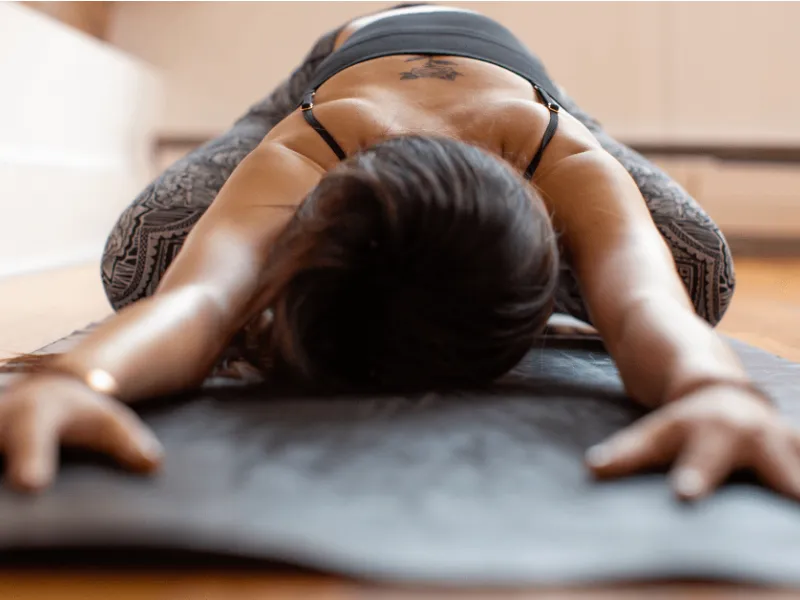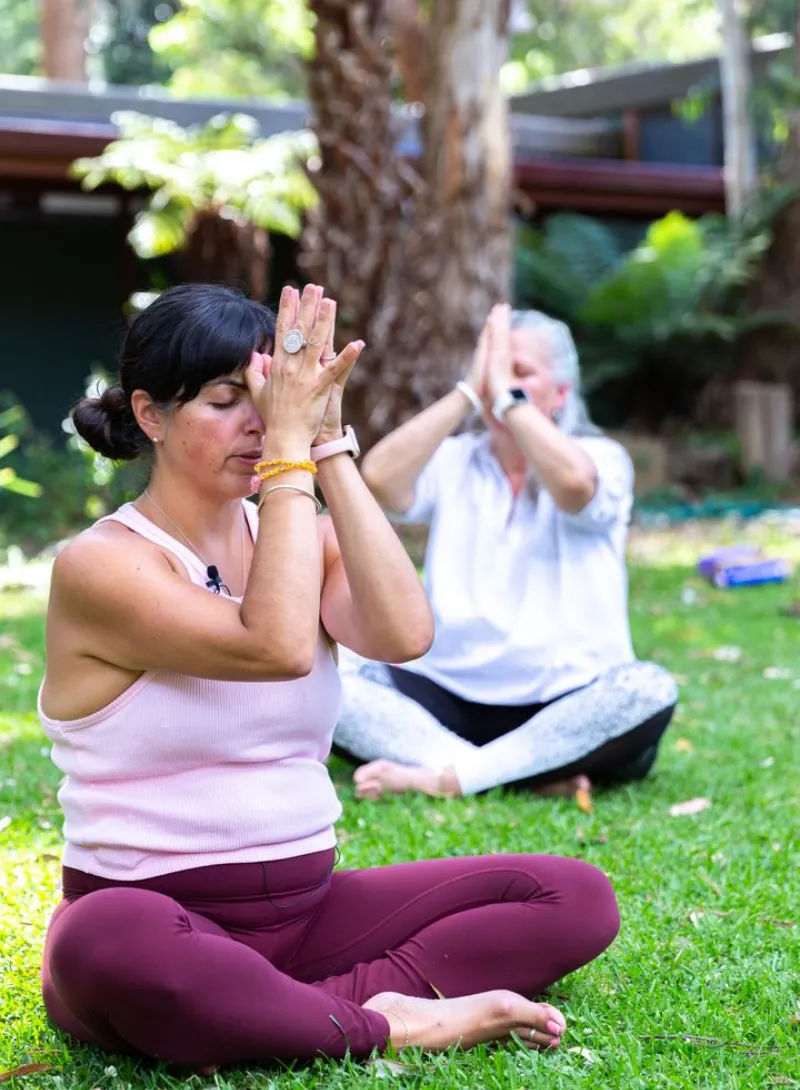Yin Yoga & The Lung Meridian – an immune supportive practice
In recent years, the practice of Yin Yoga has gained popularity among people seeking a more meditative and restorative form of yoga. Unlike other types of yoga that focus on muscular strength and dynamic movement, Yin Yoga is a slow and passive practice that involves holding poses for several minutes at a time.
The goal of Yin Yoga is to target the connective tissues of the body, including the joints, ligaments, and fascia, to increase flexibility, mobility, and relaxation, but principally to access the meridian system, which are energy channels that run throughout the body according to traditional Chinese medicine. The meridians correspond to different organs and systems of the body, and they can be stimulated through specific poses.

Yin Yoga uses a few core principles:
Time in a pose to gently stretch the connective tissues (fascia) in the body,
Remaining still(ish) – allowing the body to fully switch off accessing the parasympathetic nervous system
Find your appropriate edge – we don’t want to feel pain or discomfort while in a pose.
In Chinese Medicine (TCM), Autumn is the season to nourish our Lung Chi. It is a time of transition and one when we often find ourselves or those around us unwell with the flu or when eczema suffers really suffer.
The Lung Meridian is an important energy pathway that plays a crucial role in respiratory function and immune system function. The lungs include the organ of the skin and are paired with the large intestine, (the colon). This energy is all about taking in what we need and letting go of what we don’t.
The Lung Chi is responsible for a healthy immune system, which is well worth considering in our yin yoga practice at this time of year.
Emotionally Lung Chi is about being able to deal with change, grief, and being able to go with the flow of what life brings. Letting go of the need to fix ourselves, or others, the need for control or perfection.
The Lung Meridian runs along the arms, from the chest to the fingertips, and it is responsible for the flow of Qi (or energy) throughout the respiratory system. When the Lung Meridian is blocked or stagnant, it can lead to respiratory issues such as asthma, allergies, and infections. By practicing Yin Yoga poses that target the Lung Meridian, we can improve the flow of Qi and enhance our respiratory health.
Here are three poses that you can try for an at home lung sequence:
1. Melting Heart
Big breath for the lungs. Knees directly under the hips. Palms face down, hand reaching forward. Heart melting towards mat. Block or bolster under chest or head if desired.
2. Single arm chest stretch
Line on your belly with Cactus arms or “T” arms, you can play with sensations for each. Roll onto your left side so weight is in left chest. Chest is opening, hips are stacked. Right foot can plant on the floor acting as a kickstand or knees can remain bent and stacked. Repeat on opposite side.
3. Supported fish
Build your base. I like two blocks: first one right on the bra line, second one under your head. Can also use bolsters, pillows or blankets. Make sure the chest is highest point of the body, head is supported. Height difference between chest and head doesn’t have to be so exaggerated. Stretch your legs out and enjoy.

Not comfortable practicing yin but still feeling your immune system dip?
Simply practicing deep breathing techniques can also help to stimulate the Lung Meridian and improve respiratory health. By taking slow, deep breaths and focusing on the inhalation and exhalation, we can increase the flow of Qi through the respiratory system and reduce stress and anxiety, which can also contribute to respiratory issues.
Another technique that you can consider during the change of season is EFT (Emotional Freedom Techniques) often known as tapping. It is a therapeutic technique that involves tapping on specific points on the body to release negative emotions and promote healing. It combines elements of traditional Chinese medicine, psychology, and mindfulness to address emotional and physical issues.
During an EFT tapping session, the person identifies the negative emotion or belief they want to work on and then taps on specific acupressure points on their face and body while repeating a series of affirmations. The idea is that by tapping on these points, the person can release any blockages in their energy system and restore balance to their body and mind. Try drumming the tips of your four fingers on your chest about 20 times and observe the vibrations.Lastly, getting enough sleep is vital to our wellbeing, especially when the natural world around is slowing down and hibernating, reminding ourselves to get good quality rest and practice mindfulness during the transition into winter will help keep the body in balance.
[……]
